In the heart of Sardinia, on the eastern coast near Baunei, lies the Barbagia region, one of the world’s few “Blue Zones” – areas where people live exceptionally long lives, including an extraordinary number of centenarians. Unlike Okinawa in Japan, where longevity seems to favor women, Sardinia’s longevity phenomenon is unique in that many men also reach this remarkable age. Researchers and authors have delved into the mystery of healthy aging in these regions, and I have gathered the most significant insights for you.
Firstly, it’s crucial to understand that these centenarians are not found across the entire island of Sardinia. A Vanity Fair journalist, in search of this secret, once headed to the Costa Smeralda – a location far from ideal for such a quest. The phenomenon is confined to a specific, geographically limited area in the hinterlands of the east coast, characterized by remote village life and steep cliffs.
In their quest to identify such hotspots of longevity, researchers Gianni Pes and Michel Poulain outlined the relevant regions on a map with a blue marker – hence the term “Blue Zones” that persists to this day.
In addition to the Ogliastra and Barbagia regions on Sardinia, other Blue Zones around the world include Okinawa (Japan), the Nicoya Peninsula (Costa Rica), Ikaria (Greece), and Loma Linda, California. However, in Loma Linda, it’s primarily the followers of the Seventh-day Adventist Church who enjoy such longevity. In all regions except Sardinia, the ratio of elderly women to men is approximately 5:1, while in Sardinia, it’s 2:1 and in some villages even 1:1. This gender parity in longevity is unique even among the Blue Zones, making it a truly extraordinary phenomenon!
The secret to long life in Sardinia appears to be multi-faceted. Researchers agree that genetics contribute only about 10% to human lifespan – the remaining 90% are attributed to lifestyle, diet, and habits.
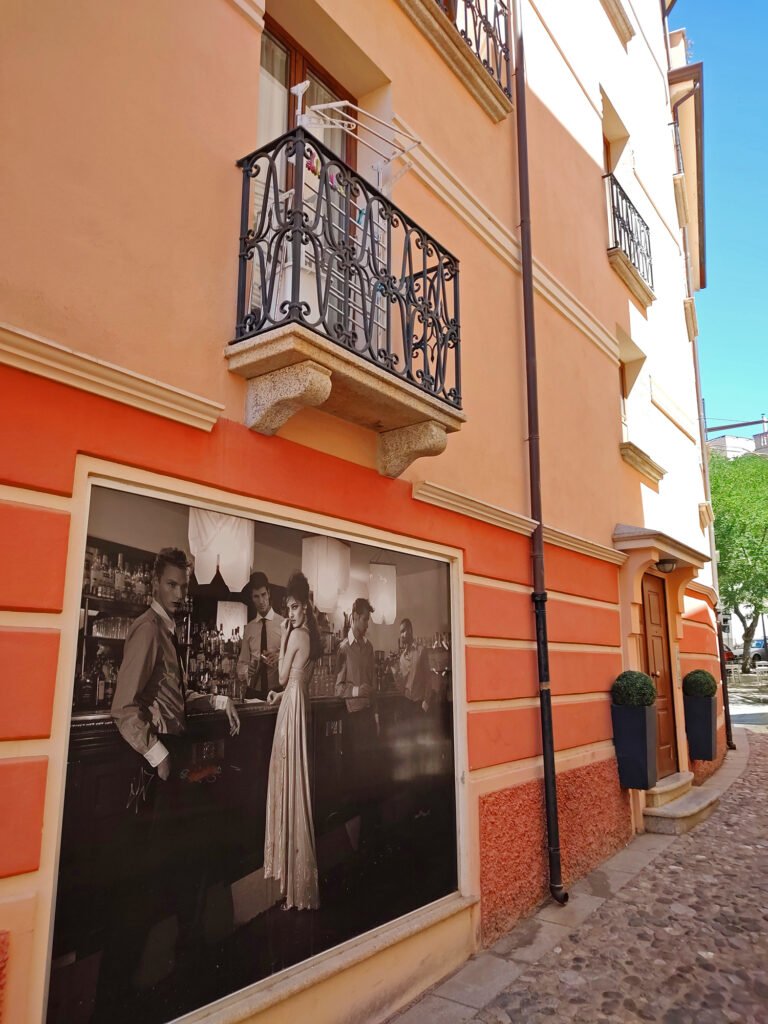
Dietary Practices of the Centenarians in Sardinia
The diet of Sardinia’s centenarians is well-documented and follows a few fundamental principles, originating from the basic foodstuffs available in the mountainous regions of the island’s remote hinterland. However, those envisioning the typical Italian cuisine of pizza, pasta, and fish are quite mistaken. Sardinia, an autonomous region, shares few culinary customs and habits with mainland Italy. The cornerstone of the Sardinian diet is instead a trio of quintessential island foods: bread, cheese, and wine.
The Essentials: Sourdough Bread, Sheep Cheese, and Red Wine
This combination might sound deceptively simple, but let’s take a closer look at these three components to understand their role in the Sardinian diet and their contribution to longevity.
Sardinian Bread – A Staple of the Island’s Diet
The Importance of Durable Bread in Sardinian Cuisine
In Sardinia, bread has historically played a vital role, especially in the lives of shepherds who were often on the move for weeks or even months, guiding their flocks to lush pastures. Their donkeys were laden with essentials, prominently featuring the island’s typical bread, a dry variety known as Pane Pasticcu. This bread, taken in large quantities, was a staple for these journeys. Today, the more popular variant is Pane Carasau, the paper-thin ‘Music-Bread’, still prevalent in villages across the island. While most of the grain is no longer grown locally, the tradition of bread-making remains strong.
The Distinctiveness of Sardinian Bread
This bread differs significantly from the classic white breads made from wheat flour. On the island, wheat has always been a luxury, reserved for wealthier landowners. The less affluent shepherds in the hinterlands relied on barley, a more affordable grain that thrived in higher altitudes. Unbeknownst to them, barley was the healthier choice, being richer in vitamins, minerals, and fiber than wheat. Furthermore, instead of (industrial) yeast, this barley bread was leavened exclusively with natural sourdough, cultivating naturally occurring yeasts and lactic acid bacteria that render the bread flavorful, fluffy, and delicious.
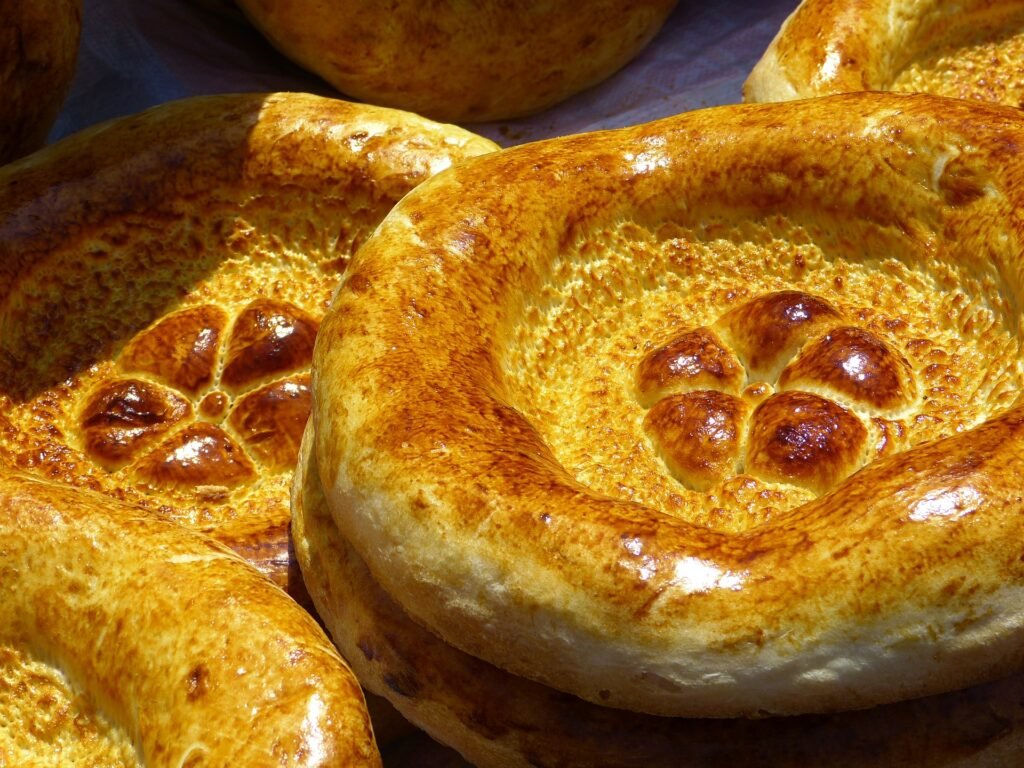
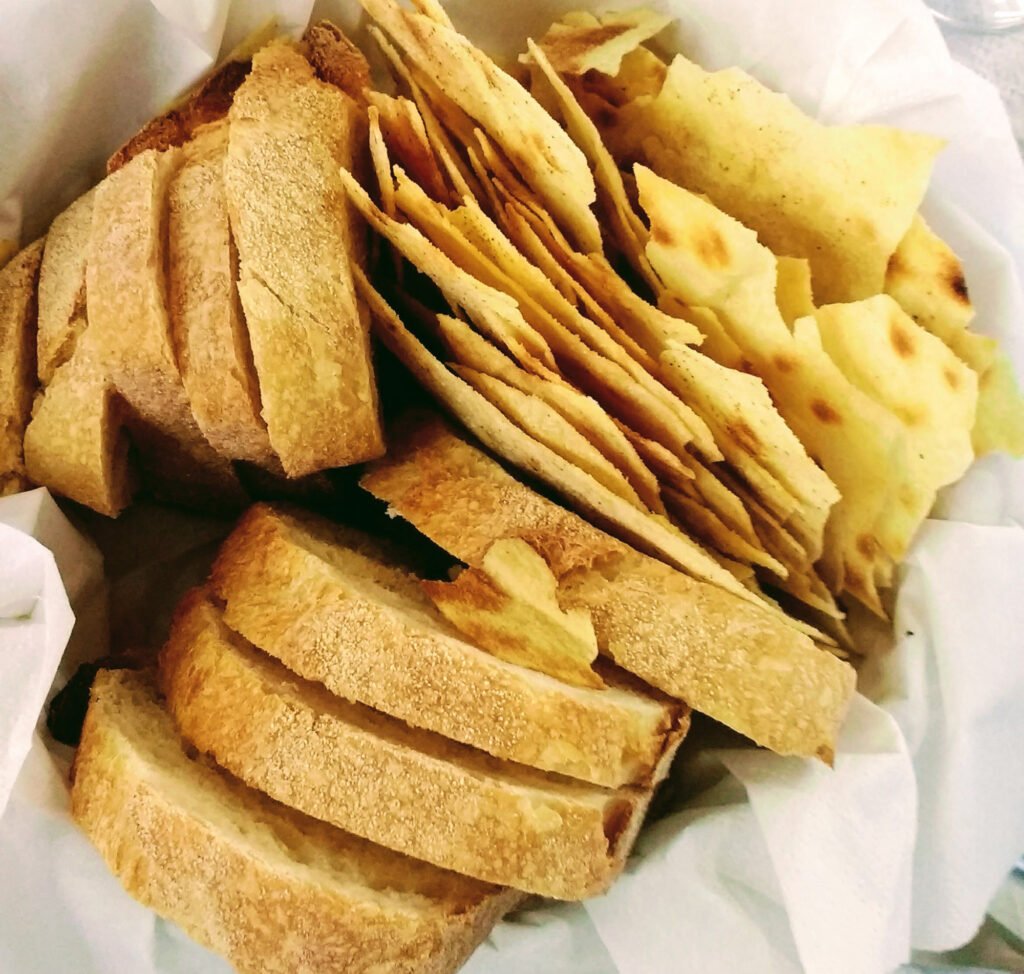
The Health Benefits of Sourdough Bread
The lactic acid bacteria in sourdough take some of the carbohydrates from the bread and convert them into lactic acid. This has a fascinating effect on human digestion: sourdough bread helps regulate blood sugar levels and insulin response. Studies have shown that when sourdough bread like Pane Carasau is consumed with a meal, it can reduce blood sugar and insulin spikes by 25%.
The dark whole grain barley flour releases energy steadily over time, rather than in a short “energy burst” like classic white wheat bread. As a result, diabetes, particularly age-related diabetes, is almost unheard of in the Sardinian hinterland.
The Additional Advantages of Sourdough
The acids in sourdough bread also support gut flora, reduce the growth of molds and other parasites, and break down phytic acid in the bread, which can otherwise make minerals unavailable to humans. Thus, sourdough makes the minerals in barley flour accessible, making it an excellent source of these nutrients.
The Sardinian Dietary Rule Number 1
Avoid wheat flour, except in sourdough breads. Opt for bread made from whole grain barley flour!
The Sardinian Dietary Rule Number 1
Finding barley whole grain bread in supermarkets or bakeries can be challenging. The dough made from barley flour is not ideally suited for machine processing as it tends to be quite sticky, leading to clogging of the machines. In this case, consider baking your own bread at home!
Baking Sardinian Sourdough Bread at Home
Making Sourdough Starter
Creating your own sourdough starter is surprisingly straightforward. Begin with any whole grain flour – ideally, whole grain barley for authenticity. The crucial lactic acid bacteria reside in the grain’s husk and get transferred into the flour during milling. For sourdough, only whole grain flour will suffice. Start by mixing 50 grams of flour with 50 ml of water in a container, such as a jar or a bowl. After 24 hours, add another 50 grams of flour and 50 ml of water. Repeat this process for a couple of days. Soon, you should see bubbles forming in the thick mixture, indicating the production of carbon dioxide by the lactic acid bacteria. Your sourdough culture is now ready to use. For beginner bakers, mixing in some wheat flour can make the dough more manageable. A general guideline is to use 20 grams of salt and 750 grams of water for every kilogram of flour, achieving a 75% hydration level often mentioned in sourdough tutorials.
The Sardinian Sourdough Bread Recipe
Here’s an easy recipe I brought back from an extended stay in Barbagia, Sardinia. It requires a sourdough starter made from whole grain barley flour.
Step 1: Preparing the Pre-Dough
In the evening, prepare the pre-dough by mixing 200 grams of whole grain barley flour, 200 ml of water, and a large tablespoon of sourdough starter (approximately 50 grams). As the dough is quite sticky, I find it best to use a wooden spoon for mixing. Cover the mixture with a cloth and leave it in a warm place (20 to 30°C) overnight. This step produces the amount of sourdough needed for the bread.
Step 2: Making the Bread Dough
The next morning, add the following ingredients to the pre-dough:
- 300 grams of whole grain barley flour
- 250 grams of wheat flour (Type 1050 or 550, with Type 1050 being a darker wheat flour suitable for mixed bread)
- 350 ml of water
- 15 grams of salt
Mix the dough thoroughly. Start with a wooden spoon and then knead by hand for about 10 minutes until you achieve a homogeneous and somewhat elastic dough. The low wheat content means the dough won’t be as cohesive as pure wheat dough, but this doesn’t compromise the quality of the final product.
Step 3: Baking the Bread
Place the dough in a loaf pan and let it rest for about 6 hours, during which it should nearly double in size. To prevent sticking, line the loaf pan with baking paper.
After 5 to 6 hours, the dough is ready for baking. Preheat your oven to 230°C with both top and bottom heat. Place the loaf pan on a baking tray in the oven. The baking time is roughly 45 minutes. After about 30 minutes, turn the bread out onto the baking tray and remove the baking paper.
This simplified Sardinian sourdough bread, with its unique blend of barley and wheat, offers not just a taste of the island’s culinary heritage but also incorporates the health benefits that have supported the longevity of its inhabitants. Enjoy it as part of a balanced diet, perhaps accompanied by a slice of Pecorino cheese and a glass of Cannonau wine, to experience a true Sardinian meal.
The Island of Sheep. Sheep Cheese: Pecorino from Sardinia
Sardinia remains an island synonymous with sheep. Boasting a population of over three million sheep, the island has twice as many sheep as humans. This abundance profoundly influences the local cuisine, especially regarding dairy products.
The Primacy of Sheep Milk
In Sardinian culinary tradition, when we talk about dairy, we’re referring to sheep milk. Cow milk rarely features in the Sardinian diet, neither as cheese nor in its pure form. This reliance on sheep milk over cow milk has shaped a distinctive dairy culture on the island.
The Art of Pecorino Cheese
Sardinians have mastered the art of cheese-making, particularly with their beloved Pecorino, which comes in thousands of varieties, each with a unique taste. Pecorino is typically classified into three main types based on its aging process:
- Young Pecorino: Aged for about 6 months.
- Pecorino Medio: Further aged for several months, this is my personal favorite for its balanced flavor.
- Pecorino Forte: Aged nearly two years, this variety is extremely hard and intensely flavorful, often challenging for the Northern European palate. It serves excellently as a substitute for Parmesan cheese.
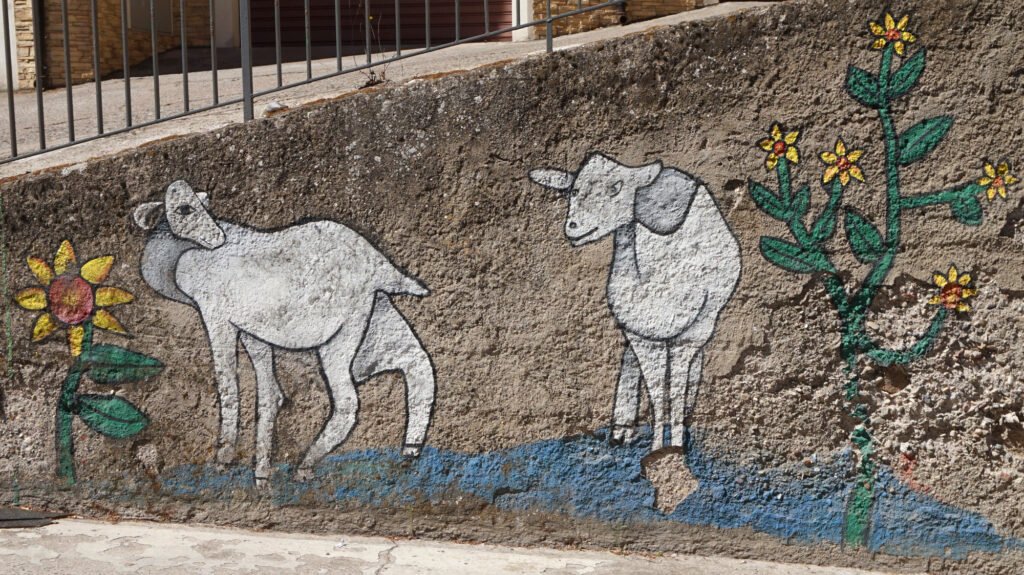
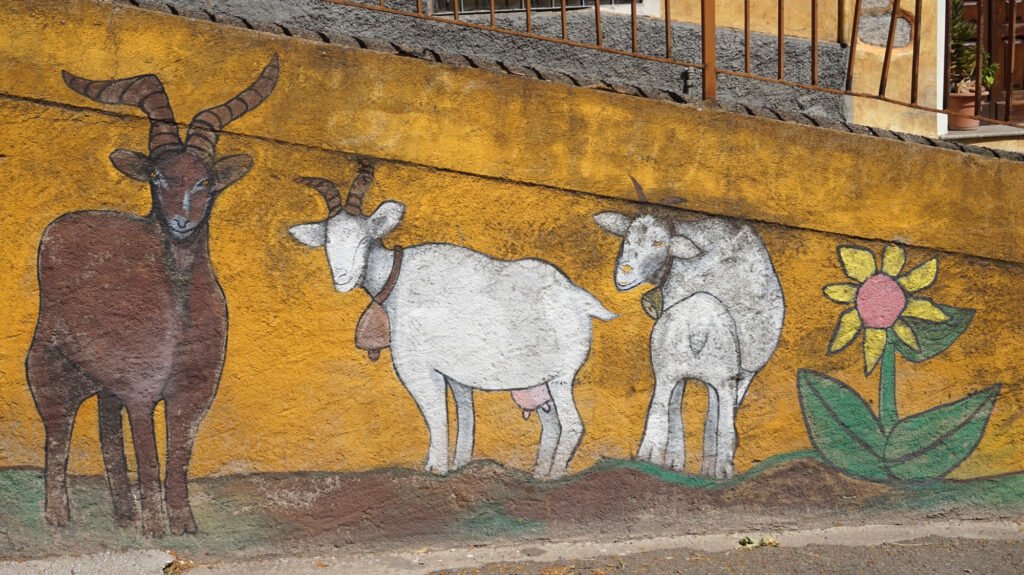
The Nutritional Benefits of Sheep Cheese
Sheep cheese stands out not just for its distinct taste but also for its high nutrient density. It is significantly richer in minerals like potassium, calcium, iron, and copper, as well as various vitamins (A, B2, Biotin, B12, Niacin, Vitamin C) compared to cow milk cheese. Furthermore, sheep milk contains higher levels of orotic acid, which plays a crucial role in cellular metabolism. Orotic acid is regenerative, potentially preventing the formation of fat deposits in blood vessels that can lead to arteriosclerosis. It also facilitates the body’s absorption of magnesium, a mineral effective in preventing cancer, vascular changes, and heart attacks. Magnesium is challenging for the body to absorb on its own, requiring adenosine triphosphate (ATP), which can be increased through orotic acid.
Goat milk, with properties similar to sheep milk, was also a staple in every household in rural Sardinia. In lean times, breakfast often consisted solely of a glass of goat milk, preferred for its lower fat content compared to sheep milk, making it easier to drink.
Sardinian Dietary Rule Number 2
Eliminate cow milk from your diet and switch to dairy products made from sheep or goat milk.
Sardinian Dietary Rule Number 2
The good news is that even regular supermarkets now offer a wide range of products made from sheep or goat milk. Keep an eye out for these options on your next shopping trip!
The Health Benefits of Red Wine – The Red Cannonau of Sardinia
You’ve likely heard that a glass of red wine in the evening can be beneficial for your health, but do you know why? Polyphenols, found in red grapes, serve as a natural defense against sunburn and protect the grapes from fungi, viruses, bacteria, and toxins. These polyphenols have similarly positive effects on the human body. They can combat low-grade inflammation, which significantly accelerates the aging process in humans. Additionally, they help balance “good” HDL cholesterol and “bad” LDL cholesterol, offering protection to the blood vessels.
Melatonin and Alcohol in Red Wine
Red wine also contains melatonin, responsible for regulating metabolic processes in the human body. It has calming and relaxing effects. Moreover, the alcohol in wine triggers the release of serotonin in humans – the same neurotransmitter released during sunlight exposure.
Cannonau Wine: A Sardinian Specialty
From the classic red grape of Sardinia, Cannonau wine is produced, noted for its prolonged maceration that results in its deep red color. A wonderful side effect of this process is the increased transfer of valuable polyphenols into the wine. In Sardinia, Cannonau is consumed very moderately, typically not more than one or two glasses per day.
Sardinian Drinking Habits
During the day, Sardinians stick strictly to water from local sources, avoiding wine until the evening.
Sardinian Dietary Rule Number 3
For a healthy lifestyle, indulge in dark red wine, preferably Sardinian Cannonau, in moderation during the evenings. Otherwise, drink water and especially avoid sugary beverages, including juices.
Sardinian Dietary Rule Number 3
Further Insights into Sardinian Dietary Habits
The dietary habits of Sardinia’s centenarians reveal much more. Interviews with these remarkable individuals have uncovered additional eating practices that contribute to their longevity. These habits, deeply ingrained in the Sardinian culture, provide valuable lessons on maintaining health and well-being through diet.
Legumes
The diet of Sardinian shepherds traditionally relied on vegetarian fare. Legumes, alongside the ubiquitous Pecorino cheese, were a key protein source. Beans, chickpeas, and lentils, which require minimal soil quality and often grow wild, were and still are a daily staple in the diet of the elderly Sardinians. These are commonly consumed in the form of a hearty Minestrone, distinct from the lighter versions found in trattorias. The Sardinian Minestrone is more of a thick stew, featuring tomatoes, fennel, and a variety of legumes.
Rule Number 4: Limit meat consumption and focus on a vegetarian diet rich in legumes.
Fennel
Wild fennel is commonly found in Sardinia and is used in Minestrone as a flavor-enhancing ingredient. As a bonus, fennel provides vitamins A, B, and C and has a positive effect on blood pressure.
Rule Number 5: Use fennel as a base for your soups.
Tomatoes
Dry bread might taste unusual to us, but a typical Sardinian breakfast at home includes a slice of sourdough bread accompanied by fresh goat cheese and tomatoes. It’s important to note that the concept of sandwiches or paninis as we know them is unknown in the Blue Zones of Sardinia.
Rule Number 6: Incorporate tomatoes into your breakfast and salads.
Almonds & Honey
Even in the remote villages of Sardinia, sweets have always been extremely popular. In the absence of white flour, ground almonds were used for making desserts. Almonds are attributed with various health benefits, including lowering systolic blood pressure and aiding in weight loss. Crystal sugar was never a staple in Sardinia; instead, locals used honey as a sweetener in their dishes.
Rule Number 7: Consume sweets, cakes, and cookies sparingly. When you do, prepare them using almond flour and avoid crystal sugar. Honey is a great alternative sweetener.
These are some of the key dietary rules that have shaped the eating habits of Sardinia’s centenarians, contributing to their remarkable longevity. Adopting these practices could offer significant health benefits and bring a taste of Sardinian tradition to your table.
Uncommon Elements in the Traditional Sardinian Diet
While the Sardinian diet is renowned for its health benefits and simplicity, certain elements commonly associated with Mediterranean cuisine are notably absent or play a minimal role. Understanding these omissions offers a deeper insight into the unique culinary culture of this storied island.
Limited Seafood, Including Fish and Frutti di Mare
Contrary to what one might expect from an island culture, the traditional Sardinian diet features a surprisingly limited use of seafood, including fish and ‘frutti di mare’ (seafood). This might seem paradoxical given Sardinia’s extensive coastline, but the reason lies in the island’s topography and historical development. Much of the population historically resided in the mountainous interior, focusing on pastoral and agricultural lifestyles. Sheep farming, in particular, shaped their diet, leading to a preference for land-based foods like cheese and meat over seafood. Additionally, the rugged coastline made fishing a challenging and less reliable source of sustenance compared to the more predictable returns from farming and herding.
Another intriguing aspect of Sardinia’s limited seafood in its traditional diet is rooted in the island’s history, particularly its relationship with the sea. Contrary to the idyllic image of Mediterranean islands, the sea represented a source of danger for Sardinians for centuries. The threat of invasions and raids by pirates, Saracens, and various marauding forces was a recurring theme in Sardinian history.
This historical context is encapsulated in a Sardinian proverb: “Chi vene dae su mare, benit a rubare,” which translates to “Whoever comes from the sea, comes to steal.” This saying reflects a deep-seated wariness towards the sea, born from a long history of coastal raids and invasions. Consequently, the Sardinian population often settled further inland, focusing their lives and livelihoods away from the vulnerable coastlines.
Even today, the Sardinian coastline is dotted with numerous watchtowers, silent yet eloquent testaments to the island’s historical maritime threats. These towers, which still stand as proud and solemn sentinels overlooking the sea, are enduring symbols of a time when the azure waters of the Mediterranean were a source of danger rather than a tourist attraction.
Constructed over centuries, these towers served as critical lookout points, guarding against the frequent incursions of pirates and Saracens. Their presence along the coastline is a stark reminder of the island’s need for vigilance and defense. Each tower, strategically placed to provide the widest possible view of the approaching sea, formed part of an intricate network of communication and defense, allowing for early warnings and quick mobilization of local forces against impending threats.
The Concept of Gluten and Gluten-Free Diets
The concept of gluten and gluten-free diets is a relatively modern phenomenon and not traditionally part of Sardinian dietary concerns. The staple grains in Sardinia, especially in the form of sourdough bread, have always been integral to the local cuisine. The fermentation process involved in sourdough bread-making might actually make it more digestible, even for those sensitive to gluten in other parts of the world. However, it’s important to note that this doesn’t necessarily make traditional Sardinian bread suitable for individuals with celiac disease. The island’s historical isolation and self-reliance in food production meant that dietary trends, especially those based on recent global health movements, were slow to influence local eating habits.
Other Notable Absences in the Sardinian Diet
- Pasta: While pasta is a cornerstone of Italian cuisine, its presence in traditional Sardinian dishes is less dominant. The island’s culinary focus has always leaned more towards bread and less towards pasta.
- Processed Foods: The traditional Sardinian diet is marked by an absence of processed and industrially-produced foods. The focus on fresh, locally-sourced ingredients prepared in simple, time-honored ways contrasts sharply with modern processed food trends.
- Heavy Spicing: Unlike some other Mediterranean regions, the traditional Sardinian palate favors minimal use of heavy spices, preferring instead to let the natural flavors of fresh ingredients shine through.
The Sardinian diet’s uniqueness lies in its simplicity, reliance on locally available produce, and time-honored culinary traditions. It’s a diet deeply intertwined with the island’s geography, culture, and history, offering valuable lessons in the benefits of a diet rooted in natural, unprocessed foods.
Typical Habits of the Blue Zone in Barbagia, Sardinia
The Blue Zone of Barbagia in Sardinia is not just distinguished by its unique diet but also by a range of lifestyle habits that contribute significantly to the longevity and health of its inhabitants. These habits, deeply embedded in the culture and daily life of the region, include:
Strenuous Physical Activity
The rugged, mountainous terrain of Barbagia naturally incorporates physical activity into the daily lives of its residents. Farming and shepherding in this challenging landscape require constant movement, often up and down steep slopes, providing excellent cardiovascular and muscular exercise. This consistent, natural form of physical activity, which continues well into old age, is a key factor in maintaining health and vitality.
Strong Family Ties and Community Relations
In Barbagia, close-knit family units and strong community bonds are the norm. Multi-generational living is common, with elderly family members often residing with their children and grandchildren. This social structure provides emotional support and a sense of belonging, factors known to contribute to mental health and longevity. The communal lifestyle also fosters frequent social interaction, which is crucial for maintaining cognitive health and a positive outlook on life.
Deep-rooted Friendships
The importance of friendship cannot be overstated in Sardinian culture. Lifelong friendships, often formed in childhood, provide emotional support, reduce stress, and contribute to a strong sense of community. These deep social connections are believed to boost longevity by providing a network of support, reducing feelings of loneliness and isolation, especially among the elderly.
Connection to Nature and the Land
Residents of Barbagia typically maintain a close connection to their natural environment. This connection is evident in their respect for the land and the rhythm of life it dictates. Engaging in traditional practices like farming, herding, and foraging for wild herbs ties them to the cycles of nature, promoting both physical and mental well-being.
The Value of Hard Work
The culture in Barbagia places high value on hard work and self-sufficiency. This ethic not only ensures physical activity but also imbues a sense of purpose and achievement. The daily tasks of life in this region, though often physically demanding, are seen as integral to a fulfilling life.
These habits, intrinsic to the lifestyle of the Blue Zone in Barbagia, go hand in hand with the dietary practices of the region. Together, they form a holistic approach to living that promotes health, longevity, and well-being, making this part of Sardinia a remarkable study in the power of lifestyle choices on human health.
Embracing the Longevity Secrets of Barbagia, Sardinia
As we journey through the heart of Sardinia’s Blue Zone in Barbagia, we uncover a tapestry of practices and traditions that contribute to the remarkable longevity of its inhabitants. Central to this discovery is the unique dietary habits that stand as pillars of health and vitality.
The Pillars of Sardinian Diet
- Whole Grains Over Processed: The preference for sourdough bread made from barley or durum wheat, rich in nutrients and easier on digestion.
- The Power of Pecorino: Sheep cheese, with its high nutrient density, takes precedence over other dairy products.
- Moderation in Wine Consumption: The consumption of Cannonau wine, rich in polyphenols, in moderation, mainly during evening meals.
- Vegetarian Inclinations: A heavy reliance on legumes like beans, chickpeas, and lentils as primary protein sources, often featured in hearty Minestrones.
- Natural Flavorings: The use of locally grown, wild herbs and vegetables like fennel and tomatoes, enhancing meals while providing essential nutrients.
- Sweetness from Nature: A preference for almond-based sweets and the use of honey over refined sugars, embodying a natural approach to desserts.
These dietary habits, coupled with a lifestyle marked by strenuous physical activity, strong family and community ties, and a deep connection to the land, paint a vivid picture of a culture finely tuned to the art of healthy living.
The Role of Environment and History
The unique environment and history of Sardinia, from the rugged, mountainous landscape to the legacy of coastal watchtowers standing guard against ancient invaders, have shaped a lifestyle that naturally fosters health and longevity. These elements, though specific to Sardinia, offer universal lessons on the importance of diet, community, and staying active.
Inviting Reflection and Discussion
As we conclude this exploration of Sardinia’s Blue Zone, I invite you to reflect on these practices. How can elements of the Sardinian way of life be adapted to our own routines? What aspects of their diet and lifestyle resonate most with you? I encourage you to share your thoughts and join the discussion. Your insights and experiences are valuable as we collectively seek pathways to healthier, more fulfilling lives.
